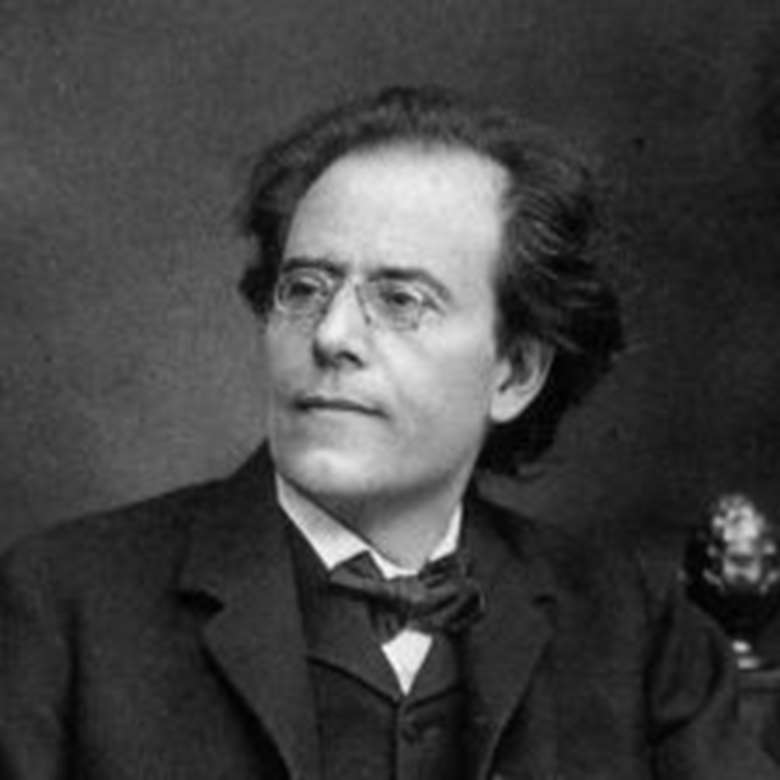Mahler's Symphony No 6, by Christoph Eschenbach
Gramophone
Thursday, January 1, 2015

The Fifth and Seventh symphonies both contain glorious statements of joy, and Mahler evidently felt he needed to write something between those pieces that gave a view on the tragic, negative side of life. It is a perfect piece for live recording, because then you really have everyone on the edge of their seats. It is an amazing symphony, so full of power, and the first movement in particular blows you away, thanks to that march rhythm right at the outset. The struggle from that A minor opening to the conclusion of the movement in A major is really titanic, with moments of extraordinary contemplation on the way – marked grazioso. Very characteristic is Mahler’s use of the cowbells – they speak of loneliness, of mountains, of being with nature. The last shimmer of life comes not from man but from animals.
In my live performances and my recordings I have the Scherzo second, for two reasons. First of all I think it works in terms of the emotional logic of the piece. The demonic dance of the Scherzo carries on the sheer power of the opening movement. The march rhythm of the first movement is inverted – the emphasis is now on the upbeat and the switch to a 3/4 rhythm represents another attitude, a rebellion against the 4/4 of the preceding movement. Thesforzatos on the third beat make this march a double opponent of the one that went before. There is a second reason too. To my mind, there is a crucial tonal clue in the fact the Andante ends in E flat major, which should be followed by the parallel, related key of C minor – the beginning of the finale.
We don’t know for sure why Mahler changed his mind about the order of these movements. Numerous authorities have written on the matter but there is no definitive answer. My belief is there may have been practical reasons. Orchestras at that time may well have struggled to play this music, and to have two such unrelentingly powerful movements together may have been too much for them technically. Mahler may also have been influenced by advice from someone else, as Bruckner so often was, though Bruckner was of course tormented by self-doubt, which was a problem Mahler never had. I just believe the original way is preferable. The Scherzo is such a rebellious and rough piece, with a Trio that comes twice and has the unusual marking altväterisch – like an elderly father. I imagine an old man, uttering opinions and dancing awkwardly. There is also that marking of grazioso – implying a certain sympathy with old age.
Mahler wrote only wonderful slow movements but this Andante is one of the most wonderful. There are such beautiful, cantabile moments, especially when the music slips into C major and everything seems to stand still. No one can breathe any more. Even the passionate climax with the cowbells is cantabile. Everything is wonderfully balanced and the finale emerges naturally from this, with its unusually long introduction before the main subject appears.
There are also discussions about the third hammer-blow. I fully accept Mahler’s decision to leave it out. If you look at the score carefully, the two other hammer-blows are each followed by an incredible struggle. You are hit by a hammer – by destiny – and it is a phenomenon from outside our realm of understanding. Twice we make every effort to struggle back against Fate. I believe Mahler excised the third hammer-blow because he didn’t want to make a final, pessimistic statement, which might have been interpreted as the death of symphonic creation in general. He already had it in mind to write a Seventh Symphony, which would be followed by the glorious Eighth, Das Lied von der Erde, the Ninth. So this was not the end.
Shostakovich wrote highly personal music too but he never captured all the facets of life in the same way. Many people wonder why Mahler wrote such tragic music when he was at the height of his powers. We can never understand the soul and thought-processes of such a genius but I believe this music demonstrates how full of force and energy he was. For him, this was the right time to write this music. Furthermore, he had reasons to sense a not-so-happy future ahead. He had already experienced some big fights at the Vienna State Opera and anti-semitism had begun to manifest itself. Out of all that burst this volcano of tragic force.
Interview by Michael McManus (Gramophone, March 2010)
Explore Mahler's symphonies with the leading Mahler conductors:
Symphony No 1, by Charles Mackerras
Symphony No 3, by Lorin Maazel
Symphony No 4, by David Zinman
Symphony No 5, by Simon Rattle
Symphony No 6, by Christoph Eschenbach
Symphony No 7, by Valery Gergiev
Symphony No 8, by Michael Tilson Thomas
Symphony No 9, by Esa-Pekka Salonen








